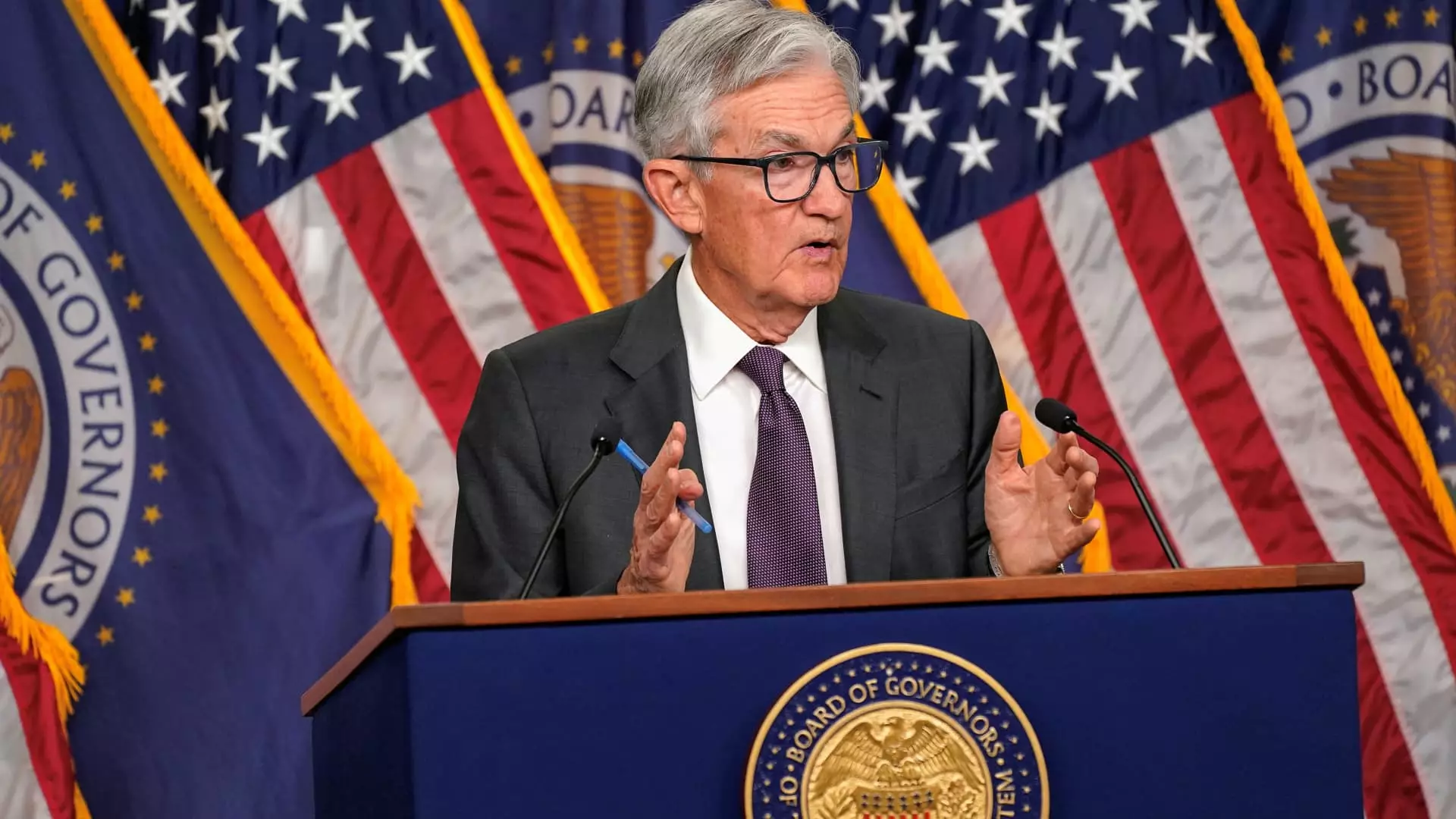In a pivotal move that reflects the current economic climate, the Federal Reserve’s decision to maintain interest rates signals a complex web of uncertainties afflicting the U.S. economy. On the surface, the move offers a semblance of stability, but deeper analysis reveals a landscape fraught with caution and potential volatility. This article dissects the nuances of the Fed’s recent policy meeting, provides critical viewpoints on the implications of their decisions, and emphasizes the broader economic context in which these choices are being made.
The Standstill: A Temporary Shelter from Turmoil
In a climate of looming tariffs and an air of skepticism regarding economic growth, the Federal Reserve opted to keep benchmark interest rates stable, positioned at 4.25%-4.5%. While such a decision could be perceived as a safety net, it simultaneously conveys a troubling apprehension about the country’s financial trajectory. The Fed’s leadership anticipates potential cuts later in the year—a nod to the underlying fear of economic downturns. However, the real question remains: is stasis truly the best approach in an economy facing disruptive changes?
The decision to hold rates steady comes, ironically, at a time when markets were bracing for action. The lack of movement—while likely reassuring in the short term —sends mixed signals. Investors cheered the Fed’s cautious optimism, illustrated by a notable surge in the Dow Jones Industrial Average. Yet, such exuberance feels precarious in the face of myriad external pressures. Tariffs implemented on global trading partners have rendered the economic landscape even more volatile, raising inflation expectations and undermining consumer confidence.
Tariffs and Troubles: Economic Projections Take a Hit
The Federal Reserve’s updated economic forecasts present an alarming picture: anticipated economic growth has plummeted to a mere 1.7% for this year, a stark decline from previous estimates. This pronounced downgrade not only reveals the brain drain in economic projections but also highlights the staggering impacts of policy decisions rooted in tariffs and deregulation. The ripple effects of protective measures often lead to unintended consequences—a reality that the Fed must now grapple with.
Moreover, inflation projections indicate escalating core price growth at 2.8% annually, an unnerving shift that may exacerbate the pressures faced by consumers. The Fed asserts that tariffs could further elevate prices, creating a vicious cycle where their initial intentions unravel amidst rising costs of living. This circumstance emphasizes the complexities of a dual mandate aimed at maintaining full employment and price stability.
The Dichotomy of Power: Balancing Act or Dissonance?
For Federal Reserve Chair Jerome Powell, navigating the fine line between monetary restraint and economic stimulation is fraught with challenges. His assertion that the central bank might maintain elevated rates, should economic conditions remain favorable, elucidates a fundamental dissonance in U.S. monetary policy. The underlying premise—that economic stability is achievable while tariffs disrupt global trade—is a complex proposition that ought to engender skepticism.
The committee’s decision-making process, underscored by ambiguity, showcases the difficulties in achieving clear objectives. This dual mandate can often clash—efforts to stimulate the job market may inadvertently result in inflationary pressures, leaving the Fed caught in a precarious tug-of-war. Powell’s acknowledgment of moderate consumer spending amidst various pressures presents a sobering reality: the economy may not be as robust as it appears.
Market Sentiment: Cautious Optimism or Fragile Recovery?
Reflecting the sentiment of Wall Street, the initial reaction to the Fed’s decision reveals an optimism that teeters on the edge of fragility. While some market leaders, like Bank of America’s CEO, assert that consumer spending remains resilient, the broader landscape suggests otherwise. The labor market’s slowing pace and the increase in a broader measure of unemployment are critical indicators that all may not be well.
As economic transformations persist, the Fed’s ability to accurately read these signals will determine its effectiveness going forward. Encouraging signs such as spending stability can mask deeper vulnerabilities, inhibiting proactive measures that might address structural issues. The threat of further tariffs could exacerbate this precarious balance, keeping consumers on edge and economic outlooks tepid at best.
The Federal Reserve’s stance on interest rates encapsulates a broader struggle within the current economic milieu. Instead of leaning towards unyielding optimism, a more tempered approach may be necessary to navigate the complexities of the current climate. The Fed’s cautious outlook lays bare the delicate interplay between policies, market predictions, and consumer behavior, urging stakeholders to grapple with the consequences of tariff-induced uncertainties. The path ahead is undeniably intricate, and the Fed’s decisions will require careful consideration as they undertake the monumental task of steering the economy through turbulent waters.

